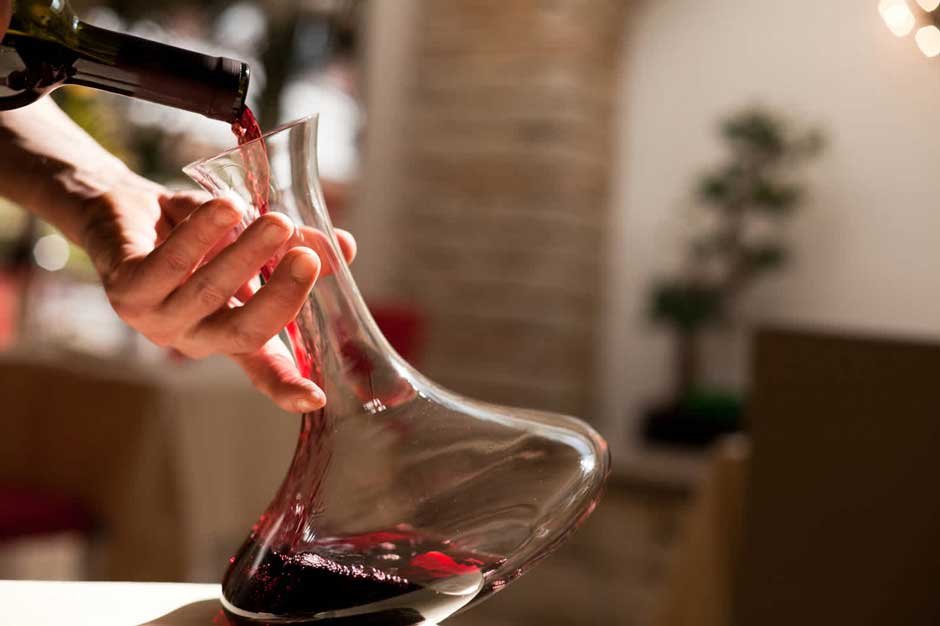Decanting wine is a time-honored practice that enhances its flavor and aroma and elevates the overall drinking experience. By allowing the wine to breathe and separating sediment, decanting can unlock hidden nuances and complexities, revealing the full potential of the wine.
This guide will explore the art of decanting wine and provide tips on how to do it properly to achieve maximum flavor and aroma.
1. Understand Why Decanting Matters
Decanting serves two primary purposes: aeration and sediment removal. When wine is poured into a decanter, it comes into contact with oxygen, which helps to open up the aromas and flavors of the wine, softening harsh tannins and allowing volatile compounds to evaporate.
Additionally, decanting allows any sediment in the Pinot Noir wine to settle at the bottom of the decanter, preventing it from ending up in your glass and affecting the wine’s texture and taste.
2. Choose the Right Wine and Decanter
Not all wines benefit from decanting, so it’s essential to know which ones to decant and which ones to leave as they are. Generally, younger, full-bodied red wines with high tannin levels, such as Cabernet Sauvignon, Syrah, and Nebbiolo, benefit the most from decanting.
Conversely, delicate wines and older vintage wines may not require decanting. They can be served directly from the bottle. When selecting a decanter, choose one with a broad base and a long neck, allowing maximum aeration and easy pouring.
3. Prepare the Wine and Decanter
Before decanting, stand the bottle upright for several hours or overnight to allow any sediment to settle at the bottom. When you’re ready to decant, carefully remove the cork or cap from the bottle, being mindful not to disturb the sediment.
Hold the bottle at a slight angle over a light source, such as a candle or flashlight, and slowly pour the wine into the decanter in a smooth, steady stream, ensuring that the sediment remains in the bottle.
4. Allow the Wine to Breathe
After decanting, allow the wine to breathe for a minimum of 30 minutes to an hour before serving. This allows the wine to aerate and develop its aromas and flavors fully.
Swirl the wine gently in the decanter or gently stir with a decanter brush to help oxygenate the wine and release any trapped gases. Taste the wine periodically to gauge its evolution and determine when it has reached its peak flavor and aroma profile.
5. Serve with Style
Once the wine has had time to breathe, it will be served and enjoyed. Pour the wine into clean, stemmed glasses, filling each glass no more than halfway to allow room for swirling and sniffing.
Hold the decanter by the base or neck, being careful not to touch the bowl, which can affect the wine’s temperature. Serve the wine confidently, allowing guests to savor the rich aromas and flavors unlocked through the decanting process.
6. Store Leftover Wine Properly
Suppose you have leftover wine in the decanter after serving. In that case, it’s essential to store it properly to preserve its freshness and flavor. Seal the decanter with a stopper or cork and keep it in a cool, dark place away from direct sunlight and temperature fluctuations.
Alternatively, transfer the leftover wine back into the original bottle using a funnel and cork it tightly to minimize oxygen exposure. Leftover wine should be consumed within 24-48 hours to prevent oxidation and preserve its quality.
7. Clean and Care for Your Decanter
After use:
- Clean your decanter thoroughly to remove any wine residue and prevent staining or lingering odors.
- Rinse the decanter with warm water and mild dish soap, using a decanter brush or sponge to reach the bottom and remove any stubborn stains.
- Rinse the decanter thoroughly with clean water and let it air dry upside down on a dish rack to prevent water spots.
- Store the decanter safely, away from potential damage or breakage, ready for your next wine adventure.
Elevate Your Wine Experience with Decanting
Decanting wine is a simple yet effective way to enhance its flavor and aroma, allowing you to appreciate its complexity and character fully. By following these tips and techniques for decanting wine, you can unlock your favorite wines’ hidden nuances and subtleties and elevate your drinking experience to new heights.
Whether enjoying a special occasion or simply unwinding after a long day, decanting wine adds a touch of elegance and sophistication to any wine-drinking experience, ensuring maximum enjoyment and satisfaction with every sip.

